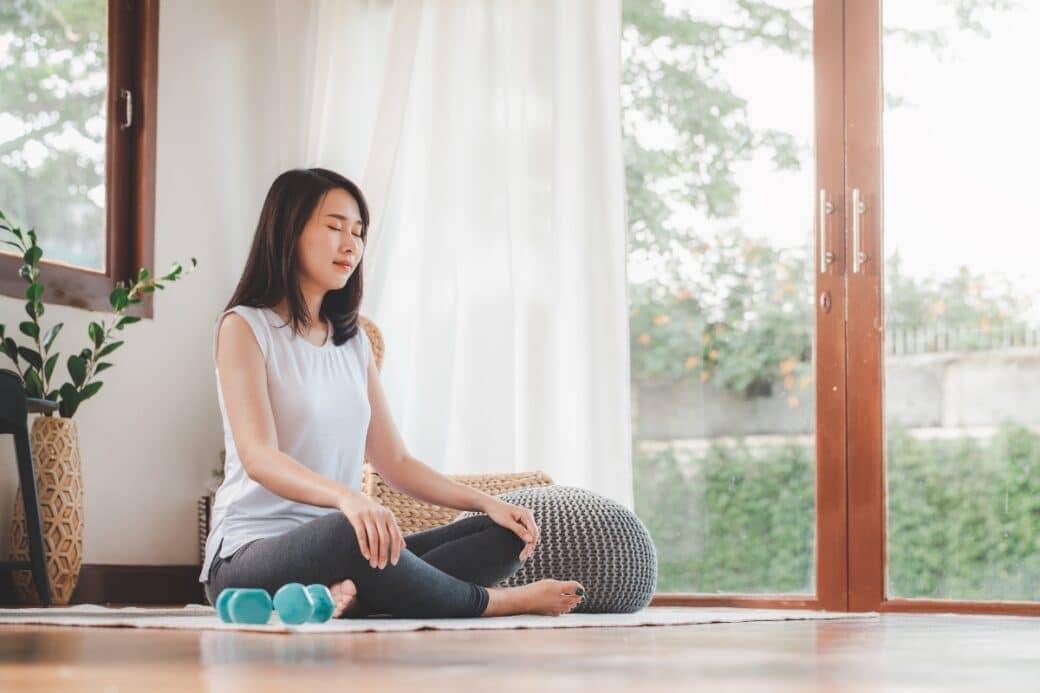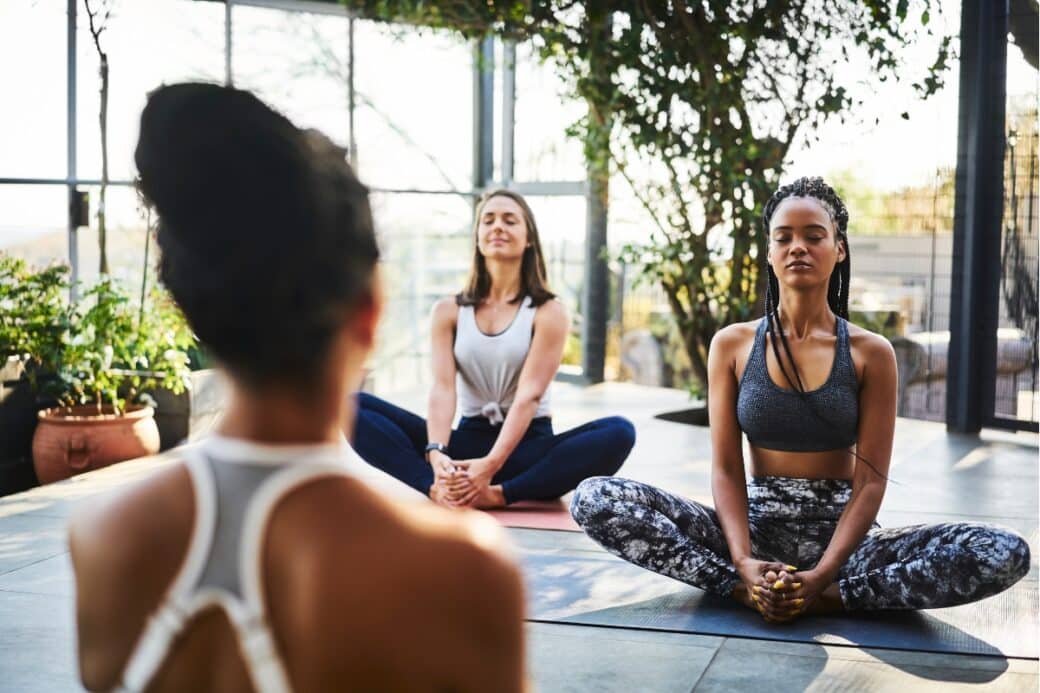Imagine having a peaceful sanctuary right in the comfort of your own home, where you can escape the chaos of everyday life and find a moment of tranquility. In this article, you will discover the secrets to creating your sacred space for meditation. Transform a corner of your house into a serene oasis that encourages relaxation, focus, and introspection. With a few simple steps, you can set the stage for a fulfilling meditation practice at home. Let’s dive into the art of crafting your own sacred space.
Understanding meditation and its benefits
Definition of meditation
Meditation is a practice that involves training the mind to focus and redirect thoughts in order to achieve a clear and calm mental state. It is a technique that has been used for centuries to promote relaxation, reduce stress, and enhance overall well-being. Meditation can be done in various forms, such as sitting quietly in mindfulness, repeating a mantra, or engaging in guided visualization.
Different styles of meditation
There are numerous styles of meditation, each with its own unique approach and benefits. Mindfulness meditation involves paying attention to the present moment, observing thoughts and sensations without judgment. Loving-kindness meditation focuses on cultivating feelings of compassion and goodwill towards oneself and others. Transcendental meditation involves the use of a repeated mantra to transcend ordinary conscious thinking. Other styles include breath awareness meditation, body scan meditation, and walking meditation. It’s important to explore different styles to find the one that resonates with you.
Health benefits of meditation
Meditation has been proven to have a multitude of health benefits. Research has shown that regular meditation can lower blood pressure, reduce the risk of heart disease, improve immune function, and decrease inflammation in the body. It has also been found to alleviate symptoms of anxiety, depression, and insomnia. Additionally, meditation has been shown to enhance concentration, creativity, and overall mental clarity.
Mental benefits of meditation
In addition to the physical health benefits, meditation offers a wide range of mental benefits. It helps to calm the mind, reduce stress, and promote emotional well-being. Regular practice of meditation can improve focus and attention span, enhance self-awareness, and cultivate a sense of inner peace. It can also help manage and reduce the symptoms of various mental health conditions, including anxiety disorders, depression, and PTSD. The mental benefits of meditation extend beyond the practice itself, positively impacting all aspects of life.
Preparing for home meditation
Best times of day for meditation
The best time to meditate varies from person to person, depending on individual preferences and schedules. Some people find that meditating in the morning helps set a positive tone for the day ahead, while others prefer to meditate in the evening to unwind and relax before bed. Experiment with different times of the day to find what works best for you and try to establish a consistent meditation routine.
Physical preparations for meditation
Creating a comfortable and supportive physical environment is essential for a successful meditation practice at home. Choose a quiet space where you won’t be easily disturbed, and use a comfortable cushion or chair that supports proper posture. Wear loose-fitting clothing that allows for easy movement and doesn’t restrict blood flow. It can also be helpful to stretch or engage in gentle yoga poses before meditation to release tension and prepare the body for stillness.
Mental preparations for meditation
Preparing the mind for meditation is just as important as preparing the body. Set aside any distractions or responsibilities for the duration of your meditation session. Let go of any expectations or judgments, and approach the practice with an open and non-judgmental mindset. Take a few moments to settle into the present moment and cultivate a sense of gratitude and curiosity. Remind yourself that this is a time for self-care and inner reflection.

Choosing a suitable location for meditation at home
Finding the right space
Finding a suitable location for meditation at home can make all the difference in the effectiveness and enjoyment of your practice. Look for a quiet, peaceful, and clutter-free area where you can comfortably sit or lie down. It could be a spare room, a corner of your bedroom, or even a section of your living room that you can designate as your meditation space. Make sure the space feels inviting and conducive to relaxation and introspection.
Essentials in a meditation space
While the physical requirements for a meditation space may vary from person to person, there are a few essentials that can enhance the experience. Firstly, ensure that the space has good lighting, either natural or artificial, that allows you to see without straining your eyes. Secondly, consider adding soft furnishings such as cushions or a meditation mat to create a comfortable seating arrangement. Lastly, include elements that inspire tranquility and peace, such as plants, candles, or meaningful artwork.
Dealing with sharing living spaces
If you live in a shared living space, finding a quiet spot for meditation can be a challenge. Communicate with your housemates or family members about your need for a designated quiet time and space. If finding complete solitude is difficult, consider investing in noise-cancelling headphones or using a white noise machine to mask any background noise. Alternatively, find a time when the house is typically quieter, such as early in the morning or late at night.
Cleaning and purifying your meditation space
Why cleanliness matters for meditation
Maintaining a clean and clutter-free meditation space is important for creating a conducive environment for deep relaxation and mental clarity. Physical clutter can be a distraction and disrupt the flow of energy in the space. Keeping the area clean not only promotes a sense of calm and order but also helps to create a sacred space that is dedicated to your practice.
Tips for physically cleaning your space
Start by decluttering the area, removing any unnecessary items or objects that do not contribute to your meditation practice. Dust and vacuum the space regularly to keep it clean and free from allergens. Consider incorporating natural cleaning products to avoid harsh chemicals that can be harmful to your health and the environment. Taking the time to physically clean your meditation space can be a meditative act in itself, allowing you to feel more connected and present in the space.
Purifying the energy of your space
In addition to physical cleanliness, it can be beneficial to purify the energy of your meditation space. This can be done through various methods such as smudging with sage or using essential oils. Sage smudging involves lighting a bundle of dried sage and allowing the smoke to cleanse the space. Essential oils, such as lavender or frankincense, can be diffused or used in a spray bottle to create a calming and purifying atmosphere. Experiment with different purification techniques to find the one that resonates with you.
Decorating your meditation space
Choosing a theme for your space
Choosing a theme for your meditation space can help create a sense of ambiance and focus. Consider incorporating elements from a specific tradition or culture that resonates with you, such as Buddhist, Hindu, or Zen aesthetics. Alternatively, you could opt for a more minimalist and contemporary look that promotes simplicity and tranquility. The key is to choose a theme that aligns with your personal preferences and enhances your meditation experience.
Using color in your meditation space
Color can have a profound impact on our emotions and state of mind. When decorating your meditation space, consider using colors that promote relaxation and calmness. Soft blues and greens are known for their soothing effects, while warm earth tones can create a sense of grounding and stability. Experiment with different color combinations and pay attention to how they make you feel during your practice.
Incorporating elements of nature
Bringing elements of nature into your meditation space can help create a connection with the natural world and enhance the overall ambiance. Consider adding plants, flowers, or a small indoor fountain to bring a sense of vitality and tranquility to the space. Stones, seashells, or driftwood can also serve as reminders of the grounding and ever-changing nature of existence. Use your imagination and intuition to select elements that resonate with you and promote a sense of harmony and serenity.
Using meditation tools and accessories
Importance of meditation cushions
Meditation cushions, also known as zafus or zabutons, are designed to provide support and comfort during seated meditation. They help to align the spine, release tension in the hips and lower back, and promote proper posture. There are different types of meditation cushions available, such as round zafus, crescent-shaped zafus, or rectangular zabutons. Experiment with different shapes and sizes to find the one that suits your body and enhances your meditation practice.
Meditation mats and their uses
While not essential, a meditation mat can help define and demarcate your meditation space. It provides a clean and comfortable surface for seated or lying meditation. Meditation mats come in various materials, such as natural fibers or synthetic materials, and can be easily rolled up and stored when not in use. They can add an extra layer of cushioning and insulation, especially when meditating on hard floors.
Use of healing crystals
Healing crystals have been used for centuries to promote physical and emotional healing, balance energy, and enhance spiritual connection. They can be used during meditation to support specific intentions or to encourage overall well-being. Popular crystals for meditation include amethyst for tranquility, clear quartz for clarity and focus, and rose quartz for self-love and compassion. Explore different crystals and their properties to find the ones that resonate with you and align with your meditation goals.
How to use incense or scented candles
Incense and scented candles can be used to create a relaxing and aromatic atmosphere in your meditation space. Certain scents, such as lavender, sandalwood, or cedar, have calming properties and can help induce a sense of tranquility. Light a scented candle or burn incense before your meditation practice to set the mood and signal to your mind and body that it’s time to unwind and focus. However, be mindful of any allergies or sensitivities to smoke or strong scents.
Setting up a meditation altar
Purpose of a meditation altar
A meditation altar serves as a focal point for your practice and can help cultivate a sense of reverence and sacredness. It acts as a visual reminder of your intentions and aspirations, and can serve as a space for reflection and contemplation. Creating an altar provides an opportunity to infuse your meditation space with personal meaning and symbolism.
What to include on your altar
The items you choose to include on your meditation altar are deeply personal and should reflect your spiritual beliefs and intentions. Common items found on a meditation altar include statues or images of spiritual figures or deities, candles, incense holders, crystals, and meaningful objects or symbols. You may also choose to include mementos or photographs of loved ones or inspirational quotes. Select items that hold significance and resonate with your practice.
How to arrange items on your altar
Arranging items on your meditation altar is an intuitive process that should feel harmonious and balanced to you. Begin by choosing a focal point, such as a statue or image, and arrange other objects around it. Consider creating a sense of symmetry or balance, using height variations or grouping similar items together. As you arrange your altar, take the time to cultivate a sense of mindfulness and intention, infusing each item with your energy and blessings.
Establishing a meditation routine
Creating a meditation schedule
Establishing a consistent meditation routine is key to reaping the full benefits of the practice. Decide on a realistic and manageable amount of time to dedicate to meditation each day. It could be as little as five minutes or as long as an hour, depending on your schedule and personal preferences. Select a specific time of day and make it a non-negotiable appointment with yourself. Consider integrating meditation into your daily routine, such as before or after meals, or as a way to transition from work to relaxation.
Setting realistic goals for meditation
Setting realistic goals for meditation can help provide structure and motivation. However, it’s important to approach goal-setting with a gentle and compassionate mindset. Instead of focusing solely on the outcome, such as reaching a certain number of minutes or achieving a particular mental state, place more emphasis on the process and the journey. Celebrate small victories and be patient with yourself if progress seems slow. Remember that meditation is a lifelong practice, and each session is an opportunity for growth and self-discovery.
Balancing meditation with your lifestyle
Finding a balance between your meditation practice and the demands of daily life is essential for long-term sustainability. Be flexible and adaptable with your meditation routine, especially during busy or challenging periods. Consider integrating meditation into your existing routine by incorporating it into activities such as walking or commuting. Remember that even short moments of mindfulness throughout the day can have a positive impact on your overall well-being.
Tips for maintaining consistency in meditation
Overcoming common obstacles in meditation
Maintaining consistency in meditation can be challenging, especially when faced with common obstacles. One of the most common obstacles is the thought of not having enough time. Remind yourself that even a few minutes of meditation can be beneficial and that your well-being is worthy of prioritization. Another common obstacle is the wandering mind. Instead of becoming frustrated or judgmental, gently bring your focus back to the present moment and the sensations of your breath or body. Finally, be compassionate with yourself if your practice feels stagnant or uninspired. Remember that progress takes time and that each meditation session is an opportunity to learn and grow.
Motivation techniques for consistent practice
Finding motivation to maintain a consistent meditation practice can be supported by various techniques. Consider joining a meditation group or class where you can connect with like-minded individuals and receive guidance and support. Set reminders or alarms on your phone to prompt you to meditate and make it a non-negotiable part of your day. Reflect on the benefits and positive changes you have experienced as a result of meditation, allowing them to serve as a source of motivation and inspiration.
Tracking your progress over time
Tracking your progress in meditation can be a powerful tool for maintaining consistency and celebrating milestones. Keep a journal or record of your meditation sessions, noting any observations, insights, or challenges that arise. Reflect on how your practice has evolved over time, and take note of any patterns or themes that emerge. By tracking your progress, you can gain a deeper understanding of your meditation journey and cultivate a sense of persistence and curiosity.
Dealing With Distractions and Challenges in Meditation
Identifying common distractions at home
Distractions are an inevitable part of meditating at home, but identifying them can help you address and minimize their impact. Common distractions include noises from household appliances, family members, or pets. Electronics such as smartphones, TVs, or computers can also be major sources of distraction. Mental chatter or internal thoughts can also disrupt your focus. By recognizing these distractions, you can take proactive steps to minimize their influence during your meditation practice.
Solution to eliminate or reduce disruptions
There are several effective solutions to eliminate or reduce disruptions during your home meditation practice. Start by creating a designated meditation space where distractions are minimized. Communicate with your family members or housemates about the importance of quiet and respect during your meditation practice. Consider using noise-cancelling headphones or playing soothing background music to mask any external noise. If digital distractions are an issue, put your smartphone on silent mode or place it in another room during meditation. Designate specific times for technology use and prioritize your meditation practice during those times.
Using distractions as part of the meditation process
Rather than viewing distractions as hindrances, you can choose to incorporate them into your meditation practice. Instead of getting frustrated when a distracting noise or thought arises, treat it as an opportunity for mindfulness and curiosity. Acknowledge the distraction without judgment, and gently bring your attention back to your breath or chosen focal point. Over time, you may find that distractions become less disruptive as you develop a greater capacity to remain centered and focused amidst external or internal disruptions.
In conclusion, meditation is a powerful practice that offers numerous benefits for both physical and mental well-being. By understanding different meditation styles, preparing a suitable space at home, cleaning and purifying the space, decorating it with intention, and using tools and accessories, you can enhance your meditation experience. Establishing a routine, maintaining consistency, and navigating distractions and challenges are all part of the journey towards a more mindful and balanced existence. Embrace the practice of meditation, and allow it to guide you on the path to inner peace and self-discovery.




